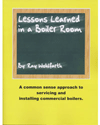How, you say? Well, this year I am going to be persistent at getting the design community, equipment manufacturers, and the construction industry to embrace the benefits of today's technology. I strongly believe that technology, and more specifically CAD and handheld computers, can provide the following benefits:
- CAD layering standards for facility/building management;
- Bar coding in lieu of equipment labels and/or stencils;
- Bar coding in lieu of valve tagging;
- Preventive maintenance workorder system on Day 1 of owner occupancy; and
- Handheld technology for all the above (as well as other benefits and opportunities).
I won't dwell on CAD layering for facility/building management. Instead, check out last month's article and this month's feature covering this topic of CAD drawings. At the same time, don't forget to get those CAD PDF files on your handheld computer for quick reference when you need to act quickly on an operational issue or need.
Time management and the use of handheld computers can revolutionize how we do business in 2003, and the first step is to begin specifying that equipment and valves get bar coded. The time has come to throw away those old specifications that call for laminated equipment labels and stenciled equipment names. Bar coding is a simple but powerful tag!
Today, you can buy a handheld computer with a bar code scanning attachment and people won't even know the scanner is there. So what can you do with this powerful business tool once your equipment is "tagged"? Seek out and purchase the appropriate software program(s) that will allow you to swipe that bar code and get:
- Lockout/tagout instructions for that unit;
- Area served;
- Startup instructions;
- Shutdown instructions;
- PM workorder;
- Prefunctional performance test documentation; and
- Functional performance test procedures and documentation.
Next, delete that standard valve tag specification, melt down those 11/2-in. brass valve tags from the turn of the century (19th to 20th century), and bar code that valve so that you can now have the following:
- Valve number and area served;
- System served and purpose of valve action;
- Emergency plan instructions; and
- Shutoff instructions.
Associated with all these applications is one more time management activity: Don't wait until the end of the project for the contractor to submit those O&M manuals with all the requirements that go along with an O&M submission.
Instead, immediately after each equipment shop drawing has been approved, begin to build those O&M manuals so that on Day 1 of owner occupancy, the project closeout is really complete. If you do that, then building the PM workorder system can follow and result in being online from Day 1. For more on this topic, keep reading Engineered Systems magazine this year.
While all these ideas will be a culture change to the building industry, their existing everyday applications demonstrate that the building industry needs to change its ways. For example, bar coding has been around more than 20 years, and we don't take advantage of its benefits.
In the past three to four years, handheld computers have truly come into their own, but we have been limiting their use to keeping our calendar, contact list, telephone numbers, etc. We need to open our eyes and look around at how technology is influencing our lives and start applying them to the mechanical and electrical industry.
We all need to make a New Year's resolution to get rid of those antiquated contract specifications and begin specifying tools, software programs, and concepts for the 21st century. We need to provide 2003 technology to our 2003 engineered, construction, and building management solutions.ES



